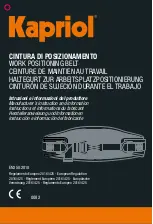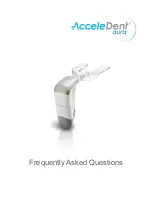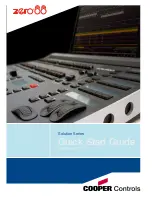
18
Grounding
The machine is a class I component (CEI
Rule 64-8 that complies with the
CENELEC HD 384 harmonisation
documents). The machine is fitted with a
main insulation and a device for
connecting its earth to a safety conductor
supplied by the customer.
Verify and, if necessary, adjust the
grounding system of the electric
supply in the place where the machine
is installed.
Starting up for the first time
The machine is supplied with a plug for
connecting it to the mains outlet.
The types of plugs used are shown in
the picture below.
The technical cards contain the data
necessary for choosing the type, features,
rated current and regulation for the above-
mentioned device allowing the user to
choose the protection device against
overcurrents (Art. 7.2.1 EN 60204-1).
Start the machine by first turning the main
switch (G photo H) to position I and then
pressing pushbutton A (photo M). Check
whether the blades turn in the direction
shown by the arrow (1 photo L): the
blades can be seen through the holes in
the perforated plate (2 photo L). If they
do not, in the case of a three-phase mo-
tor, stop the machine by pressing the
mushroom-head pushbutton (B fig. H)
and turn the main switch (G) to “0”;
Mise à la Terre
La machine est un composant appartenant
a la classe I (Norme CEI 66-8 conforme
aux documents d’harmonisation
CENELEC HD 384), pourvue d’isolation
principale et d’un dispositif pour la
connection de ses mises à la terre à un
conducteur de protéction pourvu par le
client.
Contrôler et, le cas échéant, faire
adapter la terre du réseau électrique
du local d’installation de la machine.
Première mise en marche
La machine est dotée d’une fiche pour le
branchement à la prise de courant du
secteur. Les types utilisés sont représen-tés
schématiquement dans la figure ci-dessous.
Pour permettre à l’utilisateur de la machine
de choisir le dispositif de protection contre
les surintensités (Art. 7.2.1 EN 60204-1)
dans les fiches téchniques nous avons
spécifié les données necessaires pour
choisir le type, les charactéristiques, le
courant nominal et le reglage du dispositif
susdit.
Mettre en marche la machine en plaçant
l'interrupteur général (G photo H) sur la
position "I", appuyer sur le bouton A (photo
M) et contrôler que les lames tournent dans
le sens indiqué par la flèche (1 photo L),
les lames sont visibles à travers les
ouvertures de la filière (2 photo L). Dans le
cas où les lames tourneraient dans le
mauvais sens, sur moteur triphasé, arrêter
la machine en appuyant sur le bouton
d'arrêt coup-de-poing (B fig. H) et placer
l'interrupteur général (G) sur la position "0";
Erdung
Die Maschine gehört in die Klasse I (Norm
CEI 64-8 konform mit den
Harmonisierungsdokumenten CENELEC HD
384) und verfügt folglich über eine Hauptiso-
lierung und eine Anschlussvorrichtung ihrer
Massen an einen durch den Käufer
vorzubereitenden Schutzleiter
Kontrollieren und die Erdung des
Installationsortes der Maschine eventuell
durch einen Elektriker anpassen lassen.
Erste Inbetriebnahme
Die Maschine ist mit einem Stecker zum
Anschluss an das Stromnetz versehen.
Die Steckertypen sind unten
schematisch dargestellt.
Damit der Benutzer der Maschine den
richtigen Überstromschutz wählen kann
(Art. 7.2.1 EN 60204-1), sind auf den
Datenblättern alle notwendigen Angaben
zur Auswahl des Typs, die Merkmale, der
Nenn- und Regelstrom dieser Vorrichtung
angegeben.
Zum Einschalten der Maschine den
Hauptschalter (G Foto H) auf I stellen, die
Drucktaste A (Foto M) drücken und
kontrollieren, ob die Messer in
Pfeilrichtung (1 Foto L) drehen. Die
Messer sind durch die Scheibenlöcher (2
Foto L) sichtbar. Sollte dies nicht der Fall
sein, die Maschine mit der Pilzstopptaste
(B Abb. H) stoppen und den Hauptschalter
(G) auf "0" stellen. Nun den Netzstecker
ziehen und im Stecker den schwarzen
Leiter mit dem braunen austauschen, der
grün-gelbe Masseleiter bleibt unverändert.
Dieser Austausch muss von einem
Fachmann ausgeführt werden.
Messa a terra
La macchina é un componente di classe
I (Norma CEI 64-8 conforme ai documen-
ti di armonizzazione CENELEC HD 384),
quindi dotata di isolamento principale e
provvista di un dispositivo per il collega-
mento delle sue masse ad un
conduttore di protezione predisposto a
cura dell'acquirente.
Controllare e fare eventualmente
adeguare l’impianto di terra nella rete
elettrica del luogo di installazione del-
la macchina.
Primo avviamento
La macchina è dotata di spina per il
collegamento alla presa di corrente della
rete elettrica. I tipi usati sono quelli
rappresentati schematicamente in figura.
Per consentire all'utilizzatore della macchi-
na la scelta del dispositivo di protezione
contro le sovracorrenti (Art. 7.2.1 EN
60204-1) nelle schede tecniche sono
specificati i dati necessari per scegliere il
tipo, le caratteristiche, la corrente
nominale e la regolazione del suddetto
dispositivo. Avviare la macchina ruotando
prima l'interruttore generale (G foto H)
in posizione I, premere il pulsante A (foto
M) e controllare che i coltelli ruotino nel
senso indicato dalla freccia (1 foto L), i
coltelli sono visibili attraverso i fori della
trafila (2 foto L). In caso contrario, per
motore trifase, arrestare la macchina
premendo il pulsante di stop a fungo (B
fig. H) e ruotare l'interruttore generale (G)
in posizione "0";
Puesta a tierra
La máquina es un componente de clase
I (Norma CEI 64-8 conformemente a los
documentos de armonización CENELEC
HD 384) dotada por lo tanto de
aislamiento principal y provista de un di-
spositivo para la conexión principal de
sus masas a un conductor de protección
predispuesto por el comprador.
Controlar y en su caso adaptar la
instalación de tierra a la red eléctrica
del lugar de instalación de la máquina.
Primer arranque
La máquina está dotada de enchufe para
conexión a la toma de corriente de la red
eléctrica. Los tipos usados son los que
están representados en la figura.
Para permitir al usuario de la máquina
elegir el dispositivo de protección contra
las sobrecorrientes (art. 7.2.1 EN 60204-
I) en las ficha técnicas se especifican los
datos necesarios para optar por el tipo,
características, corriente nominal y reglaje
del dispositivo mencionado.
Activar la máquina disponiendo ante
todo el interruptor general (G foto H)
en posición I; presionar el botón A (foto
M) y controlar que las cuchillas giren
en el sentido indicado por la flecha (1
foto L); las cuchillas son visibles a
través de los agujeros de la trefiladora
(2 foto L). En caso de que las cuchillas
giren en sentido opuesto, para motores
trifásicos detener la máquina
presionando el botón fungiforme de
parada (B fig. H) y disponer el
interruptor general (G) en posición “0”;
Foto M
1
2
Foto L
G
Foto H
A
B
A
CE 701
CE 702
CE 700S
CE 700SE
CE 700R
CE 700RE
CE 701
CE 702
CE 701R
9/h 220-250 V
















































